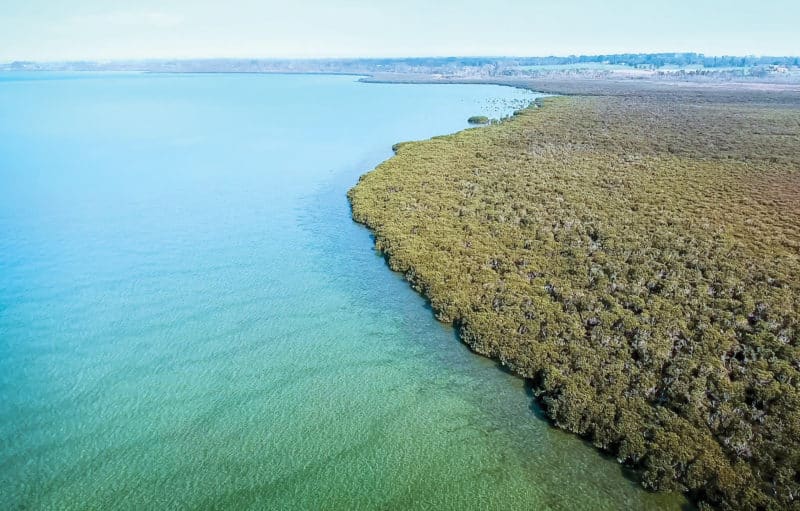PARK WATCH Article March 2024 |
Marine Campaigner Shannon Hurley elaborates on why whales and clean energy have a lot more in common than many people realise
We need a fast transition from polluting to clean energy sources to avoid the extreme impacts of climate disruption. This is especially important to stop our marine waters from rapid warming and ensuring marine life aren’t forced out of their home range. But this does not mean offshore wind farms and supporting infrastructure can be plonked anywhere. The right technology in the wrong place can cause irreversible damage to marine habitats.
There is one way to avoid significant damage to marine ecosystems and that’s through marine spatial planning (MSP). Better yet, when undertaken early in the process helps avoid problems and setbacks that further delay the Victorian Government from reaching their climate targets later.
Yet marine planning is absent from state and federal government plans as they surge ahead with the offshore wind industry. This is why VNPA have launched a new discussion paper, The winds of change, that sets out how MSP can create a responsible, nature-positive offshore wind industry.
Using MSP to organise and coordinate the marine space has many purposes and benefits. By far the biggest one is to identify important marine values and areas that should be off limits to development to avoid and protect significant areas for marine wildlife, and ones more suitable for development. Had marine planning been adopted, perhaps the Southern Ocean Renewable Energy Zone wouldn’t have been proposed within one of the most important Southern Right Whale nursery areas off the coast of Warrnambool!
We also recently saw the rejection by the Federal Environment Minister of the Port of Hastings proposal for a new port facility for the assembly of components of offshore windfarms in Western Port Bay. This was a welcome decision; this project would have caused unacceptable and irreversible damage to a protected Ramsar wetland.
The Victorian Government needs to go back to the drawing board, which will further delay plans to meet climate targets. In our view, this could have been avoided if MSP had been used early in the design process.
The winds of change calls for the Victorian and Commonwealth governments to get ahead of the planning process so our essential natural environment is not sacrificed for the energy transition.
Victoria’s marine wildlife
Victoria’s south-eastern seas and shores are unusually abundant – 80 per cent of the marine life found here occurs nowhere else on earth. They are home to more unique species than the Great Barrier Reef.
Some of our coastal and marine areas are internationally recognised Ramsar wetlands. Places like Western Port Bay, where the port facility was proposed, require extra special management and protection.
Away from the shoreline, Victoria’s deeper, open waters support plankton, sea jellies, squid, large mammals like Fur Seals, Bottle-nosed Dolphins and Southern Right Whales, seabirds such as gannets, petrels and Little Penguins, and fish including pilchards, anchovies, Silver Trevally, Barracuda and Jack Mackerel. Many are listed under our nature laws.
The ocean deserves planning equity, too
On land there is a detailed scheme, along with statutory planning and laws, for developers to manage infrastructure proposals on certain land tenures and overlays. This includes national parks and high conservation value areas. These arrangements do not exist for the marine environment, but they should.
Marine planning is essential if developers are to protect whale calving grounds, deep coral reef beds or seabird flyways from irresponsibly placed infrastructure.
Our current environmental assessment processes are woefully inadequate for planning site areas for an entirely new industry. Both the state Environmental Effects Statement (EES) and the federal Environment Protection and Biodiversity Conservation Act 1999 (EPBC Act) process are highly individualised, costly and limited in scope. In other words, they are not an adequate planning tool.
What is adequate is MSP – a tool that already exists and the Victorian Government committed to under Victoria’s Marine and Coastal Act 2018. It just needs to be implemented.
The case for MSP
MSP is a tool for governance, collaboration, funding and decision making for offshore wind projects.
Various state, national and international policy and plans reinforce the need to roll out MSP to guide industry development. At the state level, a lack of marine planning processes is inconsistent with the Marine and Coastal Act. The Marine and Coastal Strategy 2022 states that the MSP Framework applies to the Victorian Offshore Wind Strategy, to apply the guidance, approach and processes in the MSP Framework.
The benefits of MSP include:
- Planning can save time and money for industry and stakeholders.
- Information gathered during the process can be used as baseline data for EES and to value marine energy resources.
- Assurance to stakeholders that marine energy projects are located in pre-defined areas.
- High-value marine and coastal assets that can be geographically defined are removed as potential sites, providing certainty to all parties, and reducing costs.
Nature is part of the climate change solution
Marine ecosystems are an important part of the climate solution. We must protect them through the energy transition, otherwise we would simply be sacrificing one part of nature at the expense of another.
Scientific evidence shows that protecting and restoring wild animals (i.e. fish and mammals) and their functional roles, along with habitats like forests, wetlands, and coastal and grasslands, enhances natural carbon capture and storage.
- Read the latest full edition of Park Watch magazine
- Subscribe to keep up-to-date about this and other nature issues in Victoria
- Become a member to receive Park Watch magazine in print
